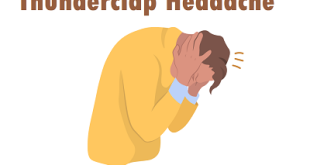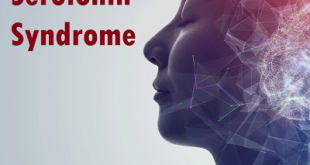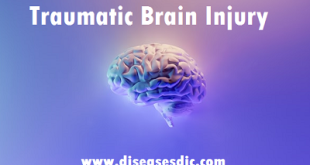Definition
Bipolar disorder is a condition that features extreme shifts in mood and fluctuations in energy and activity levels that can make day-to-day living difficult. Previously known as manic depression, it is a serious mental illness that, if left untreated, can destroy relationships, undermine career prospects, and seriously affect academic performance. In some cases, it can lead to suicide.
Types of Bipolar disorders
There are four basic types of bipolar disorder:
- Bipolar I Disorder is mainly defined by manic or mixed episodes that last at least seven days, or by manic symptoms that are so severe that the person needs immediate hospital care. Usually, the person also has depressive episodes, typically lasting at least two weeks. The symptoms of mania or depression must be a major change from the person’s normal behavior.
- Bipolar II Disorder is defined by a pattern of depressive episodes shifting back and forth with hypomanic episodes, but no full-blown manic or mixed episodes.
- Bipolar Disorder Not Otherwise Specified (BP-NOS) is diagnosed when a person has symptoms of the illness that do not meet diagnostic criteria for either bipolar I or II. The symptoms may not last long enough, or the person may have too few symptoms, to be diagnosed with bipolar I or II. However, the symptoms are clearly out of the person’s normal range of behavior.
- Cyclothymic Disorder, or Cyclothymia, is a mild form of bipolar disorder. People who have cyclothymia have episodes of hypomania that shift back and forth with mild depression for at least two years. However, the symptoms do not meet the diagnostic requirements for any other type of bipolar disorder.
Historical perspective of bipolar disorder
The ancient Greeks documented the connection between depression and mania at least as early as the 2nd century AD. The Romans described manic-depression in medical texts at least as early as the 5th century. In January, 1854, at an address to the French Imperial Academy of Medicine, Jules Baillarger, a French psychiatrist and neurologist, described a condition which caused recurrent cycles of mania and depression. He named this disorder “dual-form insanity.”
In the late 19th and early 20th centuries Kraepelin studied and categorized the natural manic and depressive cycles of bipolar patients. After noticing that an acute manic or depressive period was followed by a symptom-free period, he coined the term “manic-depressive psychosis”. In the 1950s another German psychiatrist, Karl Leonhard, coined the term “bipolar” along with “unipolar” to distinguish between folks who have both mania and depression, versus depression only.
What causes and triggers bipolar disorders?
Childhood trauma
Some experts believe you may develop bipolar disorder if you experienced severe emotional distress as a child, such as:
- Sexual or physical abuse
- Neglect
- Traumatic events
- Losing someone very close to you, like a parent or carer.
This could be because experiencing trauma and distress as a child can have a big effect on your ability to regulate your emotions.
Stressful life events
You may be able to link the start of your symptoms to a very stressful period in your life, such as:
- A relationship breakdown
- Money worries and poverty
- Experiencing a traumatic loss.
Self-esteem problems
Some researchers believe that a manic episode may be a way to escape from feeling very depressed or having very low self-esteem. It may be that when you feel very bad about yourself, mania increases your self-confidence to help you cope.
Brain chemistry
Evidence shows that bipolar symptoms can be treated with certain psychiatric medications, which are known to act on the neurotransmitters (messenger chemicals) in your brain. This suggests that bipolar disorder may be related to problems with the function of these neurotransmitters – and this is supported by some research. However, no one knows for certain what exactly these problems are, or what causes them.
Genetic inheritance
- If you experience bipolar disorder, you are more likely to have a family member who also experiences bipolar symptoms (though they might not have a diagnosis). This suggests that bipolar disorder might be passed on through families.
- However, this does not necessarily mean that there is a ʽbipolar geneʼ – family links are likely to be much more complex. For example, researchers think that environmental factors can also be triggers for experiencing symptoms of bipolar disorder. And for most people, family members are an influential part of your environment as you grow up.
Medications and drugs that cause bipolar disorder
Medication, drugs or alcohol can’t cause you to develop bipolar disorder, but they can cause you to experience some bipolar symptoms.
For example:
- Some antidepressants can cause mania or hypomania as a side effect.
- Alcohol or street drugs can cause you to experience symptoms similar to both mania and depression.
Symptoms of Bipolar disorder
Bipolar disorder may include the following warning signs.
7 signs of mania
- Feeling overly happy or “high” for long periods of time
- Having a decreased need for sleep
- Talking very fast, often with racing thoughts
- Feeling extremely restless or impulsive
- Becoming easily distracted
- Having overconfidence in your abilities
- Engaging in risky behavior, such as having impulsive sex, gambling with life savings, or going on big spending sprees
7 signs of depression
- Feeling sad or hopeless for long periods of time
- Withdrawing from friends and family or losing interest in activities that you once enjoyed
- Having a significant change in appetite
- Feeling severe fatigue or lack of energy
- Speaking slowly
- Having problems with memory, concentration, and decision-making
- Thinking about or attempting suicide, or having a preoccupation with death
Risk factors of Bipolar disorder
Factors that may increase the risk of developing bipolar disorder or act as a trigger for the first episode include:
- Having a first-degree relative, such as a parent or sibling, with bipolar disorder
- Periods of high stress, such as the death of a loved one or other traumatic event
- Drug or alcohol abuse
Complications
Left untreated, bipolar disorder can result in serious problems that affect every area of your life, such as:
- Problems related to drug and alcohol use
- Suicide or suicide attempts
- Legal or financial problems
- Damaged relationships
- Poor work or school performance
Diagnosis of Bipolar disorder
To determine if you have bipolar disorder, your evaluation may include:
- Physical exam. Your doctor may do a physical exam and lab tests to identify any medical problems that could be causing your symptoms.
- Psychiatric assessment. Your doctor may refer you to a psychiatrist, who will talk to you about your thoughts, feelings and behavior patterns. You may also fill out a psychological self-assessment or questionnaire. With your permission, family members or close friends may be asked to provide information about your symptoms.
- Mood charting. You may be asked to keep a daily record of your moods, sleep patterns or other factors that could help with diagnosis and finding the right treatment.
- Criteria for bipolar disorder. Your psychiatrist may compare your symptoms with the criteria for bipolar and related disorders in the Diagnostic and Statistical Manual of Mental Disorders (DSM-5), published by the American Psychiatric Association.
Treatment and medications to reduce bipolar disorder
To date, there is no cure for bipolar disorder. But proper treatment helps most people with bipolar disorder gain better control of their mood swings and related symptoms. This is also true for people with the most severe forms of the illness.
Because it is a lifelong and recurrent illness, people with the disorder need long-term treatment to maintain control of bipolar symptoms. An effective maintenance treatment plan includes medication and psychotherapy for preventing relapse and reducing symptom severity.
Medications
1. Mood stabilizing medications
These medications are commonly used as mood stabilizers in bipolar disorder:
- Lithium (sometimes known as Eskalith or Lithobid) was the first medication approved by the U.S. Food and Drug Administration (FDA) in the 1970s.
- Valproic acid or divalproex sodium (Depakote), approved by the FDA in 1995.
- Anticonvulsant lamotrigine (Lamictal).
- Other anticonvulsant medications, including gabapentin (Neurontin), topiramate (Topamax), and oxcarbazepine (Trileptal)
2. Atypical antipsychotic medications
- Olanzapine (Zyprexa)
- Aripiprazole (Abilify)
- Quetiapine (Seroquel)
- Risperidone (Risperdal) and ziprasidone (Geodon)
- Antidepressant medications
- Fluoxetine (Prozac)
- Paroxetine (Paxil)
- Sertraline (Zoloft)
- Bupropion (Wellbutrin)
Psychotherapy
In addition to medication, psychotherapy, or “talk” therapy, can be an effective treatment.
- Cognitive behavioral therapy (CBT) helps people with bipolar disorder learn to change harmful or negative thought patterns and behaviors.
- Family-focused therapy includes family members. It helps enhance family coping strategies, such as recognizing new episodes early and helping their loved one. This therapy also improves communication and problem-solving.
- Interpersonal and social rhythm therapy helps people with bipolar disorder improve their relationships with others and manage their daily routines. Regular daily routines and sleep schedules may help protect against manic episodes.
- Psychoeducation teaches people with bipolar disorder about the illness and its treatment. This treatment helps people recognize signs of relapse so they can seek treatment early, before a full-blown episode occurs. Usually done in a group, psychoeducation may also be helpful for family members and caregivers.
Electroconvulsive Therapy (ECT)
- For cases in which medication and/or psychotherapy does not work, electroconvulsive therapy (ECT) may be useful. ECT, formerly known as “shock therapy,” once had a bad reputation.
Sleep Medications
- People with bipolar disorder who have trouble sleeping usually sleep better after getting treatment for bipolar disorder. However, if sleeplessness does not improve, the doctor may suggest a change in medications.
- If the problems still continue, the doctor may prescribe sedatives or other sleep medications.
Management of Bipolar disorder
- Be aware of manic or hypomanic episode symptoms so if they do occur, you can seek immediate help and treatment for them. The same is true for depressive symptoms — the sooner they are caught, the sooner they can be treated.
- The best prevention strategy is for people who have already experienced an episode of mania or depression to stay on medication to avoid recurrence.
- People who have family members with the condition should be alert to the possibility that they could develop the disorder. In short, if you’re afraid that you may get bipolar disorder or are at greater risk for it in the future, you should monitor yourself for symptoms of mania or depression.
 Diseases Treatments Dictionary This is complete solution to read all diseases treatments Which covers Prevention, Causes, Symptoms, Medical Terms, Drugs, Prescription, Natural Remedies with cures and Treatments. Most of the common diseases were listed in names, split with categories.
Diseases Treatments Dictionary This is complete solution to read all diseases treatments Which covers Prevention, Causes, Symptoms, Medical Terms, Drugs, Prescription, Natural Remedies with cures and Treatments. Most of the common diseases were listed in names, split with categories.








nice article ..